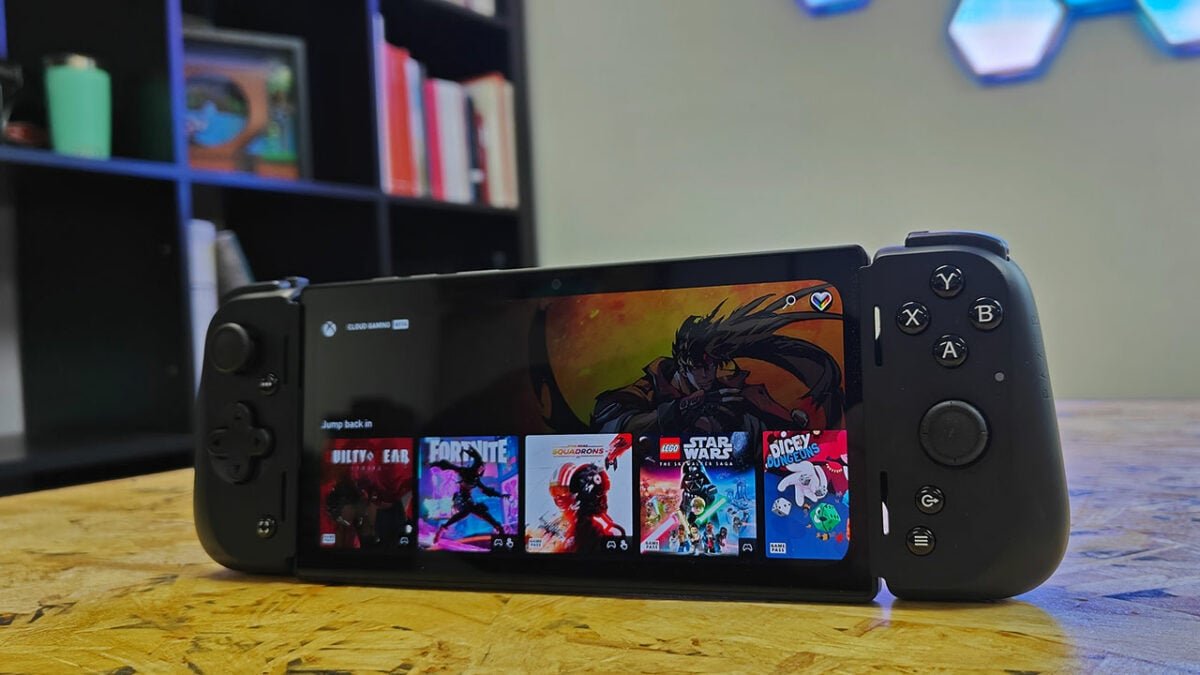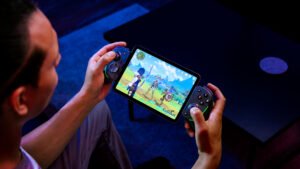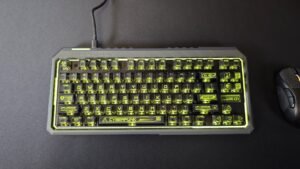The Razer Edge aims to make a splash in the competitive handheld gaming market with its sleek design and powerful performance, but it may have a hard time in an already crowded market. For the past few years, I have been a big fanatic when it comes to handheld game emulators and handhelds in general. It has always been a very cool idea to be able to take thousands of games from different consoles with you on the go in a convenient pocketable size.
Over the years, the systems have only gotten more powerful, with systems like the PlayStation 2, Wii, and even more modern systems all being played in handhelds ranging in size from the size of a deck of cards to the form factor of the Nintendo Switch. But in an oversaturated market, which device is suitable for you? And how much should you be willing to spend on one of these devices?
Razer is hoping that you are willing to shell out $399.99 for their new Razer Edge gaming device. Aimed at more than just game emulation, and more at Android gaming in general, the Razer Edge faces stiff competition in the current market. Even Asus and Logitech have started to dip their feet into the market to see if they can get a piece of the pie.
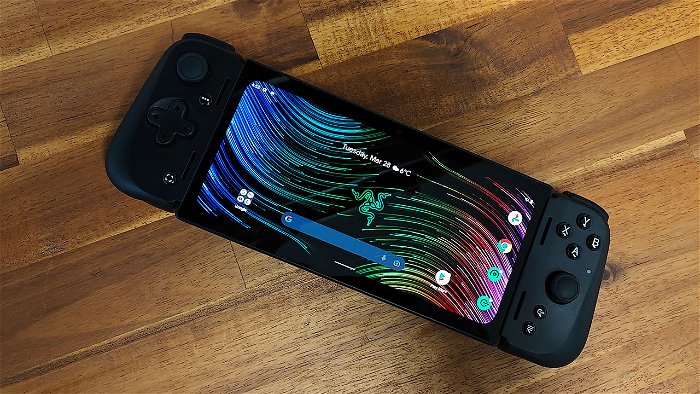
First things first, let’s take a look at what Razer includes with the Razer Edge. In the box, you get the Razer Edge handheld, Razer’s Kishi V2 Pro controller, a charging cable, and the usual documentation with warranty information, etc. Unfortunately, no fancy cases or additional accessories support the higher price. This is an area where other handheld companies can be excellent; even some of the cheapest companies occasionally toss in cases, memory cards, and tempered glass screen protectors.
“Retro gaming on the Razer Edge was nothing short of impressive.”
Looking at the handheld itself, the Razer Edge looks a lot like a modern Android smartphone, with a large 6.8-inch screen, speakers on the side, and a MicroSD card slot along the bottom. Along the top, you’ll find the volume and power buttons and a front-facing 5MP 1080p camera, which is probably meant more for streamers than actual photography. While the Razer Edge itself felt good in my hands, I couldn’t help but be slightly disappointed by the plastic-feeling backplate. With such a hefty price tag, I would have liked to see a fuller metal construction to really give the device an authentic premium sense, similar to what we find in laptops.
The Razer Kishi V2 Pro controller is the same controller consumers can purchase from Razer for $99.99. Made entirely of plastic, the Razer Kishi has a stiff enough build quality and a wide range of buttons, analog thumbsticks, and even 2 analog triggers for more precise control in situations like driving/racing games. While clicky and responsive, the keys are a little too loud for my taste, as I prefer quiet buttons—but that is just my personal taste.

Especially in games that require quick button presses for actions, these buttons can be annoying to you and those around you. The controller also has a lot more twist and flex when fully extended when used with larger devices. This worries me for its long-term durability, as I fear the plastic will eventually be stressed to the point of cracking or breaking, but time will tell on this front.
The Razer Edge is powered by the latest Qualcomm Snapdragon G3x Gen 1 processor along with 6GB of LPDDR5 RAM (cellular units come with 8GB) and 128GB of UFS 3.1 storage. If the 128GB of storage is not enough, Razer has thankfully included a MicroSD card slot to expand the available storage by up to an additional 2TB. During my time with the Razer Edge, I did not experience any stuttering or slowdowns during regular operation, and the Razer Edge breezed through every application I ran. This was further enhanced by the large 6.8 inch 2400×1080 144Hz screen. Scrolling through screens and viewing content was extremely smooth and responsive.
The Razer Edge features a 5,000 mAh battery, providing around 8-10 hours of battery life with a mix of Xbox Cloud Gaming, Steam Link remote play, and light gaming from the Google Play Store. However, when playing more demanding cloud games on GeForce Now or Fortnite Mobile through the Epic app store, battery life drops to 5-6 hours. Although having a larger battery would have been ideal, the Android-based Razer Edge offers various ways to optimize battery usage. Thankfully, the Edge charges up quickly, so you are never out of the action for too long.
“Users who want a standalone Android-based gaming handheld from an established brand will likely enjoy the device, but will have to be willing to pay the price to get it.”
Retro gaming on the Razer Edge was nothing short of impressive. While playing on various emulators, I was amazed to see that the Razer Edge had no issues playing even some of the higher-end systems like the PlayStation 2 with minimal stuttering, although some games suffered from some weird colouring issues, which is probably more of an emulator issue than a problem with the handheld itself. It was a lot of fun to be able to play all the games from my childhood, including some of my favourites like Need for Speed Underground 2, Grand Theft Auto Liberty City, San Francisco Rush 2049, and a few others.
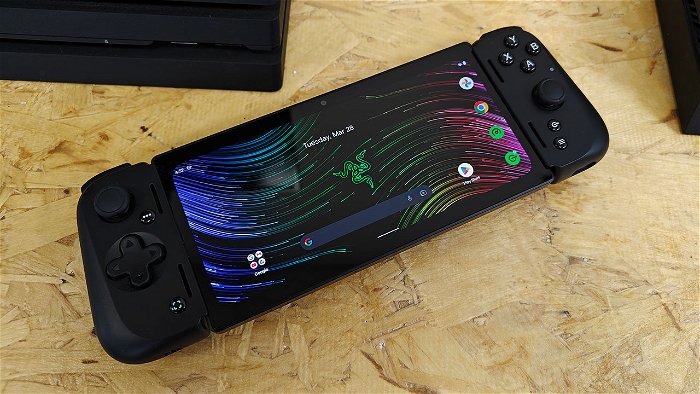
However, one consistent problem I found during my gaming experience was the extra wide screen. Many games I played on the Razer Edge had either a 4:3 or 16:9 aspect ratio, which regularly resulted in large black boxes on either side of the screen. Emulation enthusiasts may want to look at other options if this is an issue.
“In games like Fortnite, this can be especially useful when trying to spot enemies.”
When playing Android-based games, the wide aspect can be fantastic, giving you a much wider view of your surroundings. In games like Fortnite, this can be especially useful when trying to spot enemies in different parts of the map. While it didn’t make as much of a difference in the games I play, such as Asphalt 9, seeing a more expansive view of the track when racing was still lovely. The controls are fantastic for playing a match online, and the Razer Edge delivers enough performance to make you forget you are on an Android tablet.
Depending on the graphics power needed for the game being played, the Razer Edge’s built-in fan can kick in to help keep the system cool, although it can sometimes be quite loud in quiet environments. The addition of the Razer Kishi enhanced the experience, allowing me to play my games better as I had physical buttons instead of trying to use just the touchscreen like on my phone.
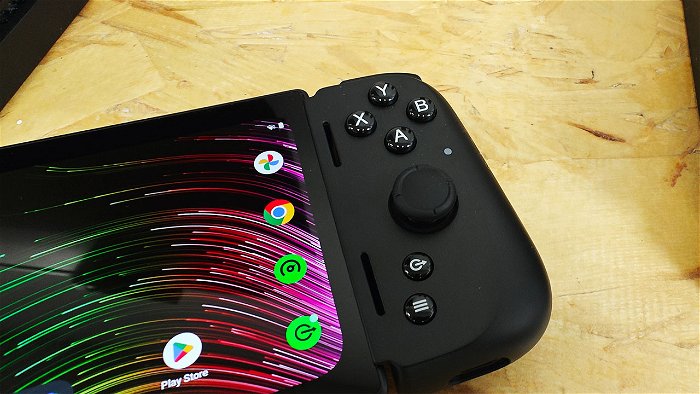
Being an Android tablet also means users can use the Razer Edge for tasks like Netflix, YouTube and other Android-based tasks. Video playback on some sites is very fluid thanks to the 144hz screen, although to conserve power, users can opt to lower the refresh rate to 120, 90 or even 60hz, depending on their desired level. Sound quality through the built-in THX speakers can further enhance sound quality and provide a more immersive listening experience in a variety of tasks.
One great feature I like about the Razer Edge is its ability to connect to a larger display or TV via a USB-C to HDMI dongle, allowing users to play games with other people at a party or in other environments where playing on the smaller screen would be impractical. Unfortunately, I did not have a Bluetooth controller available during my review period to see how well this worked.
This incredibly powerful portable gaming device has all the features you could want. However, not everyone wants to play modern games, as a solid and energetic community of retro game players exists. So with all these features, how does the Razer Edge stack up against the many gaming handhelds on the market? After all, many devices have large screens, run Android, and have similar features. At least in my opinion, this is one area where I find the Razer Edge a bit of a tougher sell as an emulation-based device.
With devices like the Retroid Pocket 3+, it offers a much more robust feel, despite having 2 GB less RAM and a 2″ smaller screen, all while being less than half the price of the Razer Edge. Granted, this is not made for emulation and is intended for more modern titles, but it would have been nice to see it be a bit more versatile for the price tag.

Competing devices from Anbernic also have similar specs while costing significantly less. For users who do not want to carry around a second device, users with a reasonably powerful Android phone with a USB-C port could save even more money and opt for just the Razer Kishi V2 Pro controller and use their phone to play all the same games. At $399.99, even the Steam Deck has a lower starting cost, and the Steam Deck has much more power and would allow users to play full PC games, not just mobile-based Android games or emulators.
I think Razer has made a reasonable attempt at a mobile gaming handheld. It plays many retro-based game consoles smoothly with minimal problems, and even some more demanding Android-based games and streaming games are no real problem for the Razer Edge. However, the few gripes I had with the console left me with the feeling of wanting more from the handheld. Users who want a standalone Android-based gaming handheld from an established brand will likely enjoy the device but will have to be willing to pay the price to get it.
